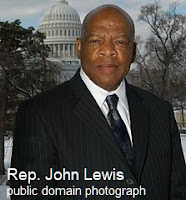Vaethanan
5780 (Deuteronomy 3:23-7:11)
In the covenant between God
and Israel, hardly any transgression is as serious as idolatry, as Moses warns
repeatedly in his predictions of what will come to pass after he is no
longer on the scene; for example:
Do not to act wickedly
and make for yourselves a sculptured image in any likeness whatever: the form
of a man or a woman... (Deuteronomy 4:16 and others following)
And also in the Ten
Commandments:
You shall not make for
yourself a sculptured image, any likeness of what is in the heavens above, or
on the earth below, or in the waters below the earth. (Deuteronomy 5:8).
In the Haftara, Isaiah addresses the
issue from a different angle, and emphasizes that the very effort to depict
God using inanimate materials is doomed to failure (quoted below). The gap is
too wide to be bridged.
Does this mean that God has
no representation on earth?
In an article “Religion and
Race”(reprinted in Insecurity of Freedom) first published in 1963, Rabbi
Abraham Joshua Heschel cries out against the violence directed at the family of
James Meredith (the first Black student at the University of Mississippi),
quotes the Ten Commandments and continues:
And yet there is something in the world
that the Bible does regard as a symbol of God. It is not a temple or a tree, it
is not a statue or a star. The symbol of God is man, every man. How significant
is the fact that the term tselem, which is frequently used in a
damnatory sense for a man-made image of God, as well as the term demuth,
likeness—of which Isaiah [in this week's Hafatara] claims (40:18), no demuth
can be applied to God—are employed in denoting man as an image and likeness of
God. Man, every man, must be treated with the honor due to a likeness
representing the King of kings.
Why was the First Temple destroyed? Due to
three sins: Idol worship, forbidden sexual relations, and bloodshed (Babylonian
Talmud, Yoma 9b)
Following Rabbi Heschel's train of thought,
forbidden sexual relations (in which I would include all sexual and
gender-based violence) and bloodshed are crude, violent acts of desecration.
The baseless hatred for which the Second Temple was destroyed, moves the desecration
from external violence into the human heart.
That is the destruction. How do we rebuild? By
internalizing that every human is an image of God. Just imagine what could
happen if the people on both sides of the barricades on Balfour Street, in the house, those whom they represent and those not represented there, treated each other as if they
were images of God. The substance of the dispute would remain unchanged, but
the path towards resolving it would be transformed.
The change depends on us. The effort is enormous,
but also essential to ensure our continued existence in the Land of Israel.




No comments:
Post a Comment